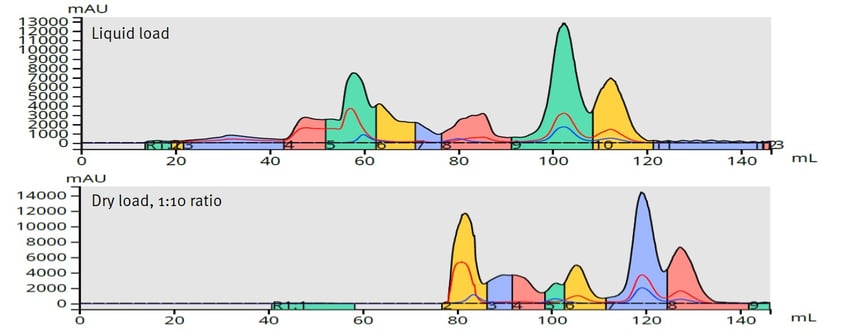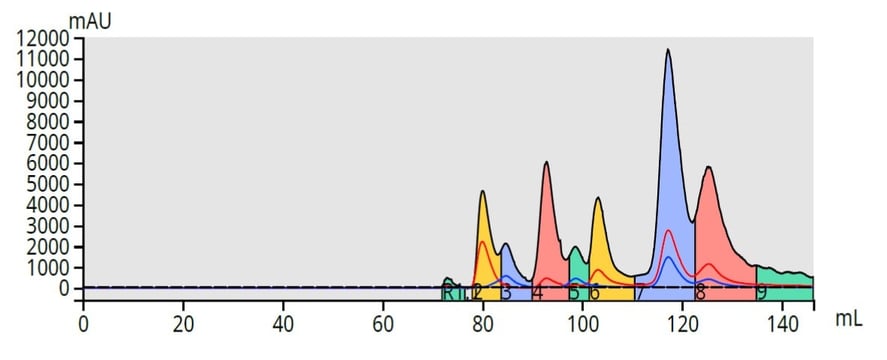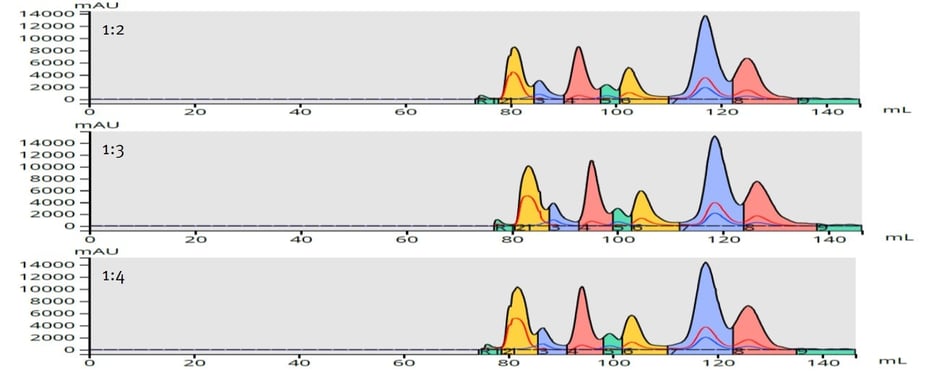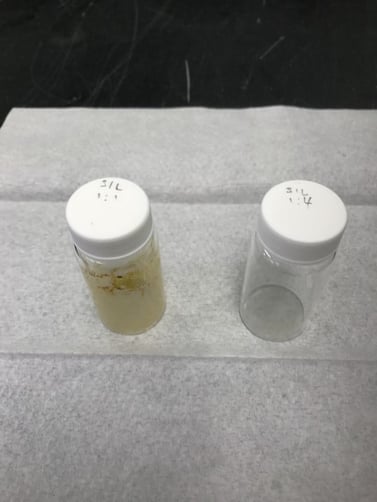Dry loading crude samples for flash purification typically works better than liquid loading, especially for challenging purifications. In this post, I discuss how the ratio of crude sample to dry load sorbent impacts purification performance.
During my career as a chromatographer, I have had the pleasure to discuss various chromatography tips & tricks with chemists. One area of frequent discussion centers around loading techniques, in particular the question of which is better, liquid or dry loading. A demonstration of dry loading vs. liquid loading usually convinces the chemist to opt for dry loading.
However, one of the dry loading questions these chemists ask is how much sorbent should I use, especially for hard to dissolve mixtures. For hard to dissolve mixtures, where large solvent volumes are required, chemists often add enough sorbent to soak up the dissolved mixture. While this protocol can work, it may not be the best approach since you do not have control over the sample:sorbent ratio.
For me, I like to keep a sample/sorbent ratio of 1:2 to 1:4 (mass:mass), even with highly dilute samples. My rationale is based on the data I have generated using various sample/sorbent ratios.
The goal with dry loading is to introduce your crude material in a relatively concentrated state into the column to eliminate dissolution solvent impact and minimize any band-spreading that can occur if too much sorbent is used. Using a lot of sorbent to soak up a lot of solvent will not always provide the desired results though they will be better than a liquid load, Figure 1.

Figure 1. A comparison of load technique results. Top - liquid loading (0.4 mL) and Bottom - dry loading (0.4 mL adsorbed onto 10 g of silica). Column - 5 g Biotage® Sfär HC. Sample - reaction mixture with a concentration of 273 mg/mL in acetone.
A sample:sorbent ratio of 1:1 can work but I find there is sample loss with decreased detection because the amount of sorbent is inadequate to adsorb all of dissolved material, Figure 2.

Figure 2. Results obtained by dry loading using a sample/sorbent ratio of 1:1 provides an improved separation profile vs. both liquid and a 1:10 sample sorbent ratio.
Sample:sorbent ratios of 1:2 to 1:4 provide the better separations because the sample concentration is high relative to the sorbent and the sorbent amount is not enough to cause major band-spreading or retention increases, Figure 3.

Figure 3. Crude mixture:sorbent ratio comparison. Top - 1:2, Middle - 1:3, Bottom - 1:4. The data show virtually identical separation with increased sensitivity compared to a 1:1 load ratio
Balancing crude sample mix:sorbent ratios within the 1:2 to 1:4 range also helps ensure that there is no sample loss due to lack of sorbent, Figure 4.

Figure 4. A photo of vials containing remnants from dry loading preparation. Left - 1:1 crude mix/silica, Right - 1:4 crude mix/silica. With a load ratio of 1:1, crude sample is not fully adsorbed onto the sorbent generating yield loss. Increasing the sorbent content to 4x the amount of crude mix eliminates yield loss.
So, when using flash chromatography, consider dry loading your crude mixture with a ratio between 1:2 to 1:4 (mass to mass) to obtain the best results.

